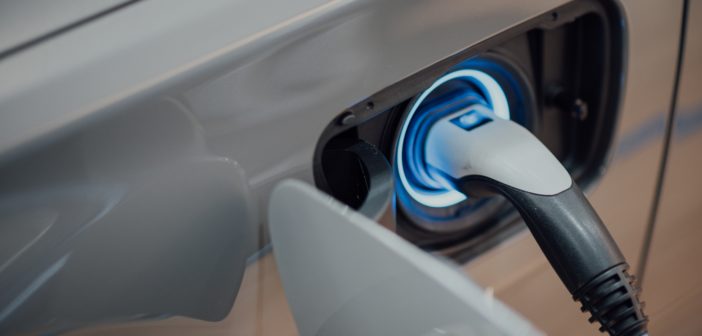Juice Technology AG released insights into the top trends influencing EV adoption in the U.S. market during 2022. Juice Technology is a producer of electric charging stations and software and the market leader in mobile charging stations for electric vehicles.
The Biden administration has set a target of 50% of electric vehicle (EV) sale shares in the U.S. by 2030. To meet this goal, Lars Thomsen, Futurologist, Juice Technology outlines the key factors that need to come into alignment.
1. Inventory. The global supply chain shortage has made it very difficult to go to a vehicle sales lot and give an electric vehicle a test drive. That will begin to change by mid-2022 as more players begin to enter the market with new options. Pickup trucks, one of the most popular U.S. choices, will be more available with Ford, Rivian, Tesla and others offering models. This menu of choices will enable a jump to more than 15% EV share in the U.S. next year.
2. Pricing Competition. To get to a 50% sales share, auto manufacturers will need to produce a range of price point models. Consumers can buy/order a range of Teslas, from its ‘cheapest’ model hovering around $45,000 to a roadster with a $200,00-plus price point. It will also offer a ‘cybertruck’ in a price point around $40,000 to compete with other EV trucks but production delivery has not been set. Over the next several years, consumer EV selection will have to be greatly expanded beyond glamour models like Tesla to meet a variety of transportation needs.
3. Charging Options. Charging infrastructure in the U.S. will grow exponentially in the coming months and years. Besides charging stations, U.S. consumers will need convenient and reliable at-home charging options. This likely will become the primary method for EV charging. In particular, the availability of mobile and stationary wall boxes, with portability for recreational travel, will become a major force in enabling U.S. electric vehicle market adoption. In addition, hotels and restaurants will upgrade their infrastructure to accommodate EV charging, equipping up to 10% of their parking spaces with AC stations for traveling guests. This will entail approximately a half million chargers over the next two years.
4. Fleet Market Expansion. Commercial expansion will also be driven by similar factors: more inventory and model options and wide availability of both public charging stations and onsite/portable chargers. Powerhouse players like Amazon will greatly expand the EV market. Amazon will fleet up to 100,000 Rivian e-vans in the next two years in addition to deploying other EV models. Additionally, the United States Postal Service fleet will be largely electrified over the next three to four years comprising approximately 260,000 vehicles. Charging convenience will be a factor in servicing all of these commercial and municipal service vehicles that typically make multiple stops in any workday.
“Accelerating EV adoption in the U.S. will require great expansion of EV inventory, pricing models, auto manufacturers‘ competing on incentives to attract new consumers and a wide availability of charging stations and at-home/portable chargers,” said Thomsen. “With these trends in play, the U.S. EV market will be poised for expansion, particularly as electric trucks, fleets and flexible charging options materialize. Given the dramatic scope of the EV transition goals, particularly for U.S. consumers, the public and private sector must make a 110% effort to ensure EVs are affordable and doable for the average family or commercial business.”
To find out more about the company, its products and solutions, go to Juice Technology or Juice Americas.
Image licensed by unsplash.com
Related News:
Certified Carbon Credits Offset Carbon Footprint with a NFT
Alabama ONE Achieves Faster Uptime and Return on Investment with Aruba ESP Network

